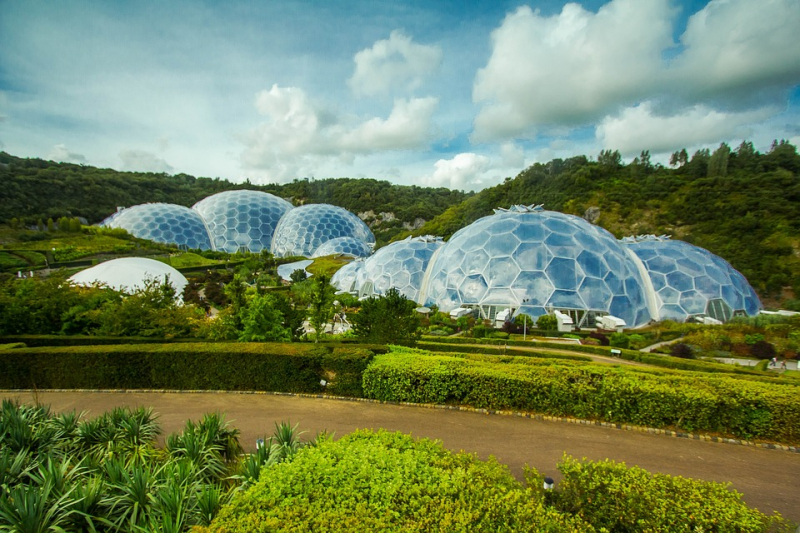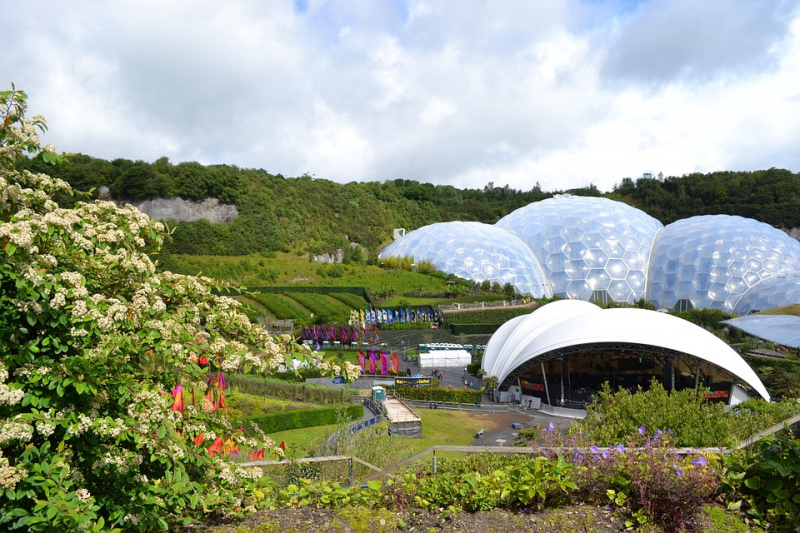The Eden Project
The Eden Project is a tourist site in Cornwall, England, United Kingdom. The project is housed in a reclaimed china clay pit two kilometers from the village of St Blazey and five kilometers from the bigger town of St Austell. The complex is characterized by two massive enclosures made up of contiguous domes that host thousands of plant varieties, each of which mimics a natural biome. Hundreds of hexagonal and pentagonal ethylene tetrafluoroethylenes (ETFE) inflated cells are supported by geodesic tubular steel domes in the biomes. The bigger of the two biomes replicates a rainforest environment (and is the world's biggest indoor rainforest), while the smaller one resembles a Mediterranean atmosphere.
The site also contains an outdoor botanical garden with many plants and species endemic to Cornwall and the UK in general; it also has many plants with an important and intriguing past, such as those with a prehistoric origin. There are proposals to construct an Eden Project North near Morecambe, Lancashire, with an emphasis on the maritime environment. The concept was first conceived in 1996, with building commencing in 1998. The construction was impeded in the early months of the project by torrential rain, and portions of the pit flooded since it is 15 meters below the water table.
Once inside, there is a meandering road with views of the two biomes, cultivated landscapes, including vegetable gardens, and sculptures such as a huge bee and previously unidentified animals. The WEEE Man, a towering figure fashioned of outdated electrical equipment that was designed to symbolize the typical amount of electrical trash used by one person in their lifetime. Throughout the year, the Core hosts art exhibitions. The anteroom is occupied by Peter Randall-permanent Page's exhibit Seed. Seed is a 70-tonne egg-shaped stonework that stands 13 feet tall and has a complicated pattern of protrusions based on the geometric and mathematical concepts that govern plant growth.
Location: St Blazey, Cornwall, England, UK











